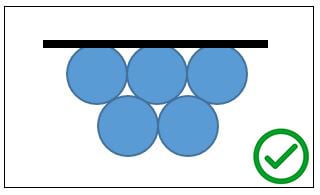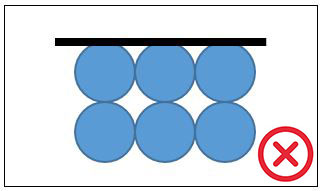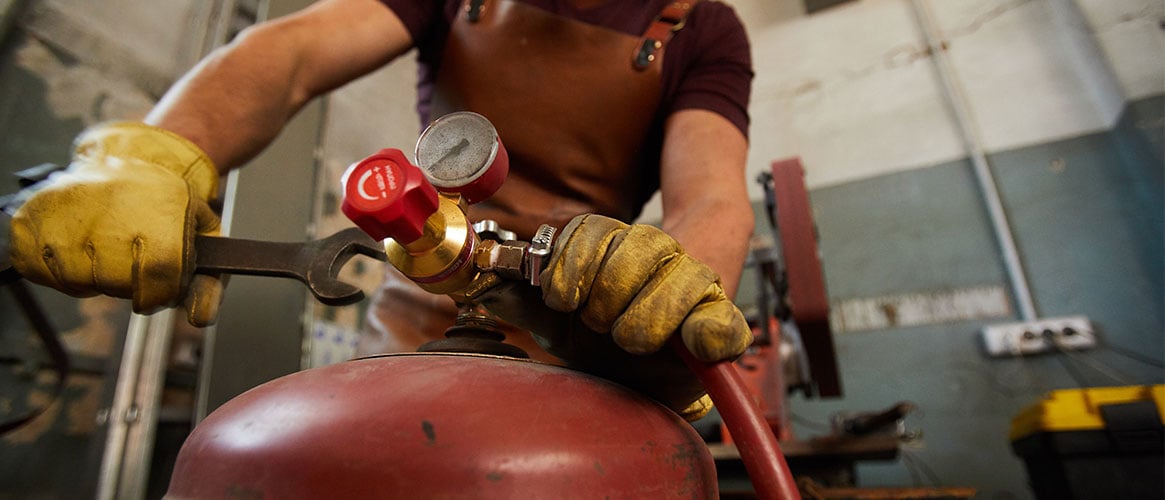Compressed gas cylinders are commonly found in the workplace. They are thick-walled, metal containers that store gas, liquefied gas, or dissolved gas (acetylene) under pressure. When gas is compressed, a large quantity of material gets put in a relatively small space, creating high pressure in the cylinder. Due to the cylinder’s heavy mass, high pressure, and hazardous contents, they can be an accident waiting to happen.
What your employees need to know about compressed gas cylinders
Cylinders can range in size from tabletop lecture bottles to those that are several feet in height and weighing more than 100 pounds. They are fitted with valves and regulators to control the release of their contents. If there is a failure of the valve, or the cylinder is damaged or punctured, the pressurized contents can be violently released. This sudden release can propel a cylinder up into the air or along the ground, potentially resulting in significant damage at your workplace. This also puts employees at risk of serious, catastrophic, or even fatal injuries.
The contents of compressed gas cylinders also pose a chemical hazard. Gases in cylinders may be cryogenic, flammable, oxidizing, reactive, corrosive, toxic, or inert. The sudden release of these materials can create a fire or explosion and expose workers to toxic or poisonous gases. They can also cause asphyxiation (suffocation) if the released gas displaces enough air to reduce oxygen levels.
Cylinders can be large and heavy, making their movement in the workplace difficult. Employees can experience strains and sprains when trying to move cylinders. Fingers and hands can also become crushed or caught between cylinders and other materials in the workplace.
What your employees need to do to work safely with compressed gas cylinders
Safe use of compressed gas cylinders centers on the hazardous material in each container as well as communication, proper storage, handling, and usage.
Read the Safety Data Sheet (SDS) for the chemical contents of the compressed gas cylinder to understand the hazards. The SDS also includes the required Personal Protective Equipment (PPE), health effects of exposure, appropriate first aid, and proper cleanup procedures.

Safely store cylinders in well-ventilated areas, away from incompatible materials, sources of flame or heat, and areas where they could be damaged. Because unsecured cylinders can be easily knocked over, they should be secured at all times with their valve protection cap in place. Nest stored cylinders together, creating at least three points of contact with other cylinders or a wall. Chains, straps, or cages should be used, with chains/straps fixed at approximately 2/3 the height of the cylinder. A second chain/strap at 1/3 the height provides additional stability, which is important in areas prone to earthquakes.

Store oxygen and flammable materials (grease/oil/ fuel gases) separately at least 20 feet apart or by a 5-foot firewall. When cylinders are empty, close the valve and cap the tank, then label the tank as “empty”.
When transporting cylinders, ensure they do not bump into each other. Always use a hand truck to move cylinders and keep them upright. Cylinders should be moved individually, secured to a hand truck with the protective cap in place at all times.
To use a gas cylinder, remove the protective cap and clear the valve of any dust or dirt before attaching the regulator. Some regulators are designed for specific gases and should not be interchanged. Connection fittings should not be forced and safety devices in cylinder valves or regulators should not be altered. Cylinders should be placed so the valve is accessible at all times.
After attaching the regulator, stand off to the side and open the cylinder valve slowly. Valves should never be left partly open—they should be opened all the way or closed. Remove leaking cylinders from service and the work area immediately, if it is safe to do so.

